![]()
![]()
Kentucky has played organized basketball for over 100 years, and during that time the rules, players and the game itself have changed dramatically over the decades.
The wide range of facilities (both on campus and off), from the earliest humble gymnasiums of yesteryear to the gigantic and extravagant domes and arenas of today have also undergone dramatic changes. Going back through time to view how these facilities have evolved gives insight into how the game itself has changed with the times. Often the upgrades in facilities have been an attempt to keep in step with the increased interest in the sport, while at other times new facilities have themselves laid the groundwork and spurred popularity of the game.
Beyond reflecting interest in the game, changes in the facilities also serve to highlight other factors which have proven important in the game's development, such as effects from political decisions, economic drivers, and cultural influences on architectural style and aesthetics.
Below are some short descriptions of selected gymnasiums and arenas during notable time periods found during the development of the game, along with graphic examples illustrating the style of the day. This is Part 1, describing facilities from the turn of the century up through the early 1970's. Part 2 looks at more modern arenas. Each of these buildings have hosted games that the Kentucky basketball team has been a part of. For a more complete listing of arenas Kentucky has played in, please consult this list.
| Turn of Century - YMCAs | Turn of Century - School Gymnasiums | Early Retrofits | 1920s - Early Basketball Gymnasiums and Fieldhouses | Large-Scale Retrofits | 1930s - Municipal Auditoriums | 1930s - Campus Gymnasiums | Post War Boom | Space Age Influences |
Proceed to Part 2 - Modern Arenas
![]()
It is well-known that basketball was a game that was first invented and developed in the YMCA by James Naismith in 1892. The YMCA organization played a critical role in promoting the game and introducing to different regions of the country and internationally.
In the early years the experience and knowledge in basketball could be found in local YMCAs, and they often served as the early opposition of many schools around the turn of the century and into the teens.
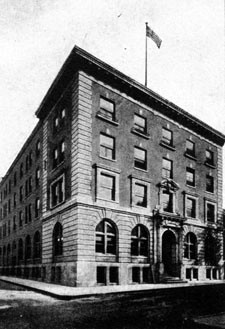
The Lexington YMCA building was built in 1904 on the corner of North Mill and Church Street in Lexington. Many former Kentucky players provided the competition, including the Guyn brothers, considered the best athletes in the city at the time.
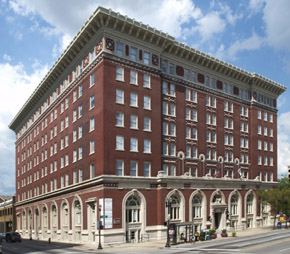
The Louisville YMCA, built on Third and Broadway, opened in 1913 and is still standing and in use as a school.
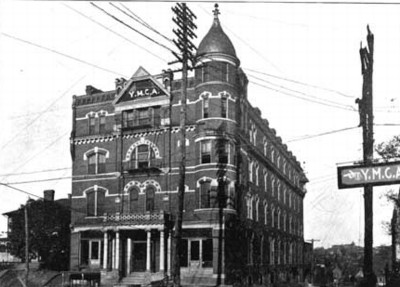
The Knoxville Central YMCA hosted numerous games between Kentucky and the University of Tennessee.
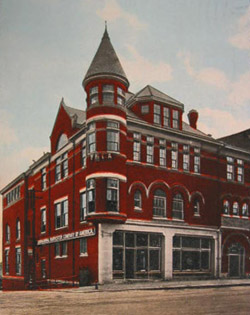
YMCA building in New Albany Indiana, site of a game in 1906.
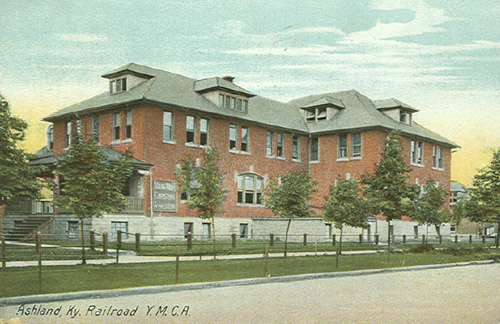
Ashland YMCA, site of a game with Kentucky held in 1914.
Back to top.
![]()
Turn of Century - College Gymnasiums
The early college gymnasiums utilized for basketball were often multi-purpose buildings which were primarily intended for other sports and activities such as gymnastics and general physical eduction.
The courts were generally very small and often-times irregular. Adequate lighting and heat were general concerns at the time. It is known that many gymnasiums of the day had structural issues (such as supporting poles, low ceilings, pot-bellied stoves, obstructive lighting fixtures etc.) which physically impeded the game. Oftentimes there was little to no thought toward accommodating spectators.
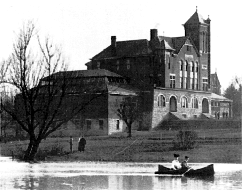
Kentucky's Gymnasium was found inside the north wing of Barker Hall (still standing and in use as a dance studio). This gym was multipurpose, used for gymnastics, gym classes, agriculture shows, dances etc. During the Spanish Flu Pandemic of 1918, it served as an infirmary. There was a small swimming pool in the basement under the gym.
Later due to increased need for gymnasium time and the potential cancellation of the basketball program because of it, the south wing of Barker Hall (Buell Armory) was floored and the basketball team began to play their games there.
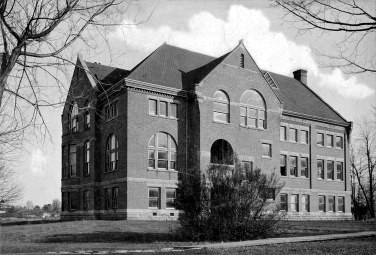
Old Boyle Gymnasium (Centre College) was built in 1891 but burned down in 1912. During the years the two schools played, Centre was called Central University while Kentucky was known as State College.
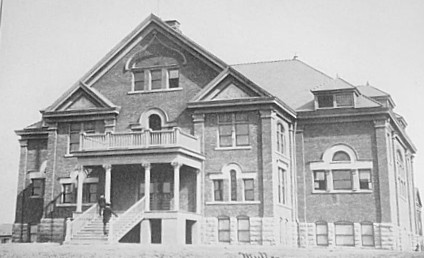
Kentucky University's (Transylvania) early gymnasium was the site of games UK played between 1904 and 1907. The gymnasium was built in 1894 and may have been the first gymnasium to hold basketball games in the city. Kentucky ceased playing Transylvania in 1912 after the culmination of many long-standing feuds and disagreements between the schools. They have not faced each other (either on the basketball court or the gridiron) since.
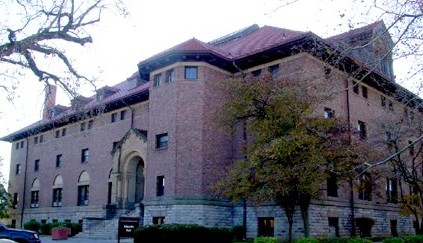
Kentucky lost a game against Ohio Wesleyan in 1911 at Edwards Gymnasium in Delaware Ohio.
Early College Gymnasiums - Interior Views
Below are some interior shots of these early gymnasiums. The basketball floors were significantly smaller than the regulation-sized courts of today.
Note that lighting was an issue, with some schools utilizing windows for their illumination while others placed light fixtures which potentially would interfere with a basketball contest.
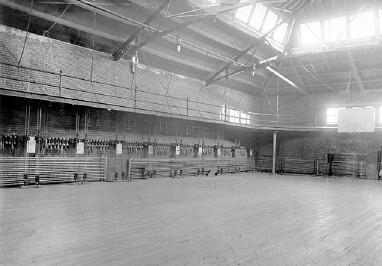
This photo shows the inside of the original UK gymnasium on the north side of Barker Hall. It was small and had relatively poor lighting with room for spectators largely on the running track suspended above the playing floor, which can be seen in this photo.
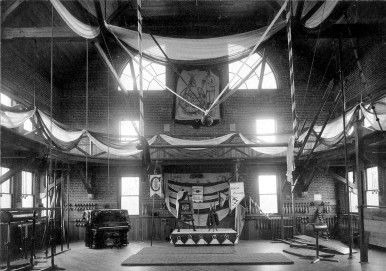
This photo shows the inside of the old Boyle Humphrey gymnasium. The small stage and what looks to be a piano in the photo underscores the multi-purpose nature of the facility.
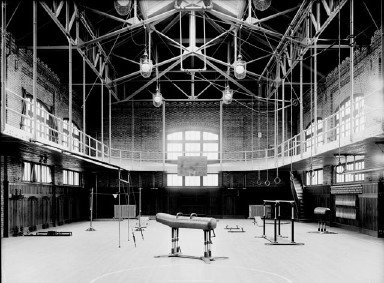
A photo of Ryan Gymnasium in Washington DC, the site of a game that Kentucky faced Georgetown in a game in 1922 on a rare Eastern trip. Again note that the gym is set up for activities other than basketball and also sported a suspended running track.
Back to top.
![]()
One classification of arenas that should be noted, but doesn't fall neatly into a particular decade are facilities that were originally built for a purpose other than basketball but due to the burgeoning popularity of the sport, were retrofitted to use as basketball venues.
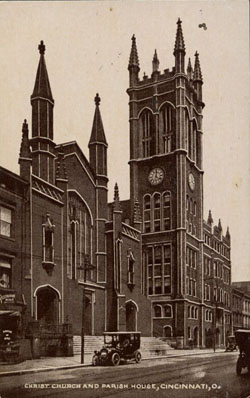
Christ Church In Cincinnati once had a highly regarded basketball team in the city of Cincinnati after the turn of the century. They hung two losss on Kentucky at their Parish House gymnasium (the Parish House is shown to the left in the photo above.)
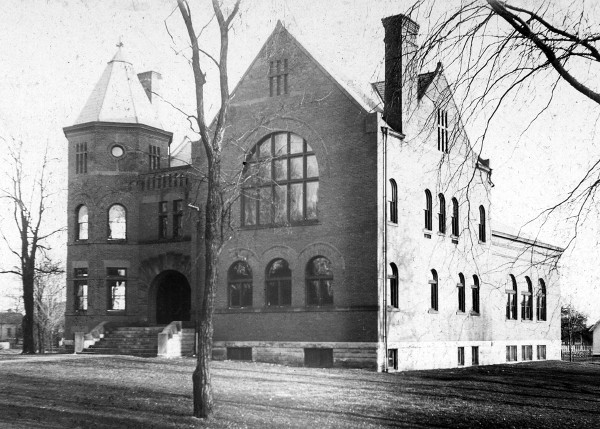
Otterbein's Association Building was built in 1893 (two years after the game of basketball was first invented) and served as host of a game between Kentucky and Otterbein in 1911.
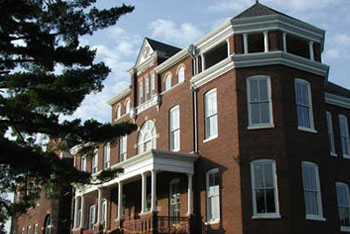
Maryville (TN) College's Bartlett Hall, site of a game against Kentucky in 1915.
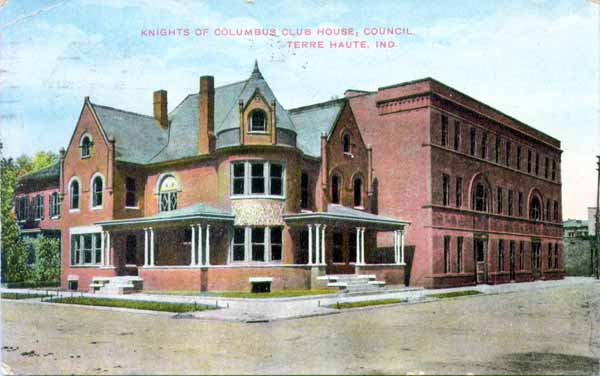
The Knights of Columbus Hall in Terre Haute, IN served as the location for a game between Kentucky and Rose Polytechnic in 1910.
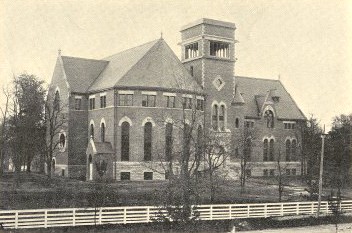
Georgetown's (KY) early Gymnasium was part of a Chapel. It burned in 1930.
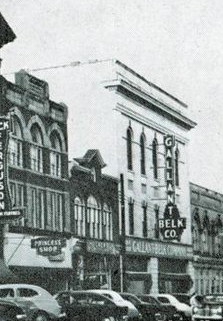
Moss Auditorium in downtown Athens, GA at times hosted home games of the University of Georgia. Kentucky met the Bulldogs in a game there in 1925.
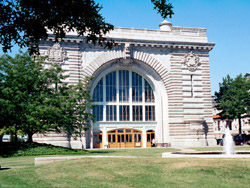
The Naval Academy's Dahlgren Hall was built in 1903 and served as the Armory along with hosting of basketball contests. UK met Navy in a game in 1928. Below is an interior shot of the building. The photograph after that shows a game being played during the 1928 season. It MAY have been against Kentucky, however the caption to the photograph did not identify the opponent in question.
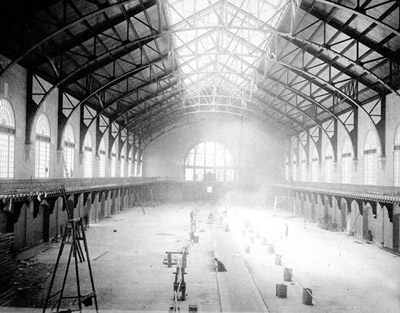
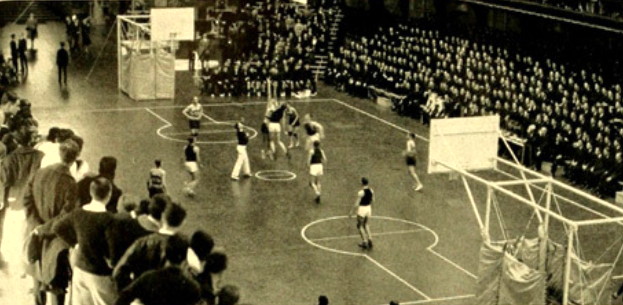
Back to top.
![]()
1920s - Early Basketball-Only Gymnasiums and Fieldhouses
As the 20's arrived, the game of basketball grew in popularity and began to demand better facilities. It appears that universities began to invest in bigger and better gymnasiums which were intentionally designed specifically for the sport. For the first time, regulation-sized courts became more the rule than the exception.
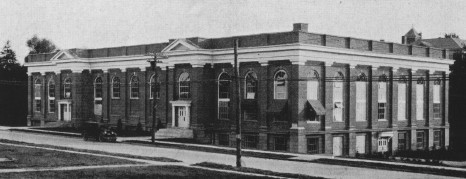
Kentucky's own Alumni Gymnasium was built due to the popularity of the sport and the recognition of the inadequacies of the Buell Armory. It was opened in 1924 and considered to be a White Elephant by many who couldn't imagine it would ever be filled to capacity. The project was subject to numerous cost overruns and delays and put UK Athletics on financial thin ice for many years.
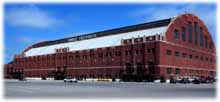
Butler (later Hinkle) Fieldhouse was built in 1928 and was one of the largest facilities in the country for basketball. It is still used to this day. It is perhaps best known as the gymnasium used for the final game in the movie "Hoosiers".
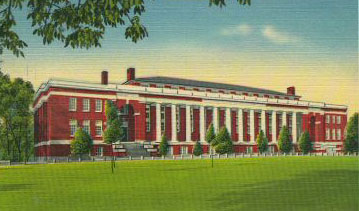
Washington & Lee's Doremus Gymnasium was built from a gift to the university from a donor who wanted to honor his mother. He visited a number of southern universities and chose Washington & Lee after he was impressed by a friendly student who gave him a tour of the campus. (I guess UK missed an opportunity there :-( )
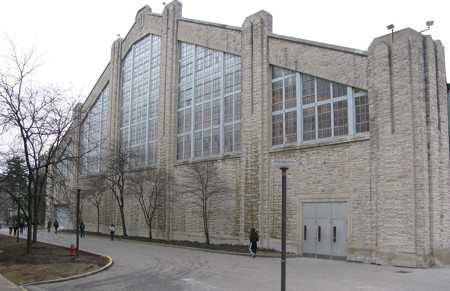
Indiana University's Fieldhouse opened in the late 1920's and was built for $350,000. It is now part of IU's HPER complex.
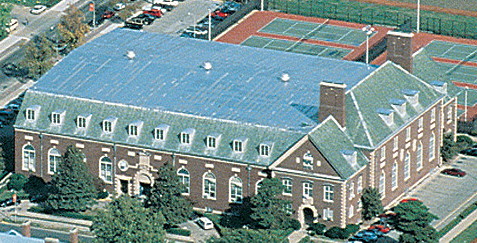
The University of Illinois' Huff Gymnasium was opened in 1925. It hosted many State of Illinois high school basketball tournaments.
Back to top.
![]()
As the game of basketball grew in popularity in the 1920's and '30's, the demand for arenas with larger seating capacity grew as well. Below are examples of multi-purpose buildings which were retrofitted to accomodate larger basketball crowds.
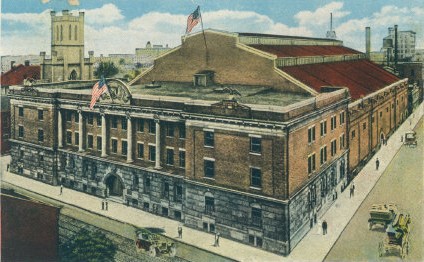
One example of using an existing facility for a new purpose was Kentucky utilizing the Jefferson County Armory (located in Louisville) for basketball starting in 1938. The huge building was built around the turn of the century but was not outfitted for basketball until it made economic sense to do so. The Armory began to host SEC Tournament games in the early 1940's and proved to be a popular and lucrative location.
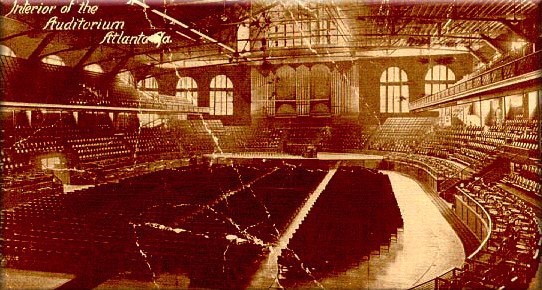
Another example of a retrofit was the Atlanta Municipal Auditorium, built in 1909 and used for public gatherings and concerts. Starting in the early 1920's it was used for some of the first basketball tournaments in the country, including the SIAA and later Southern Conference tournaments which Kentucky and schools from all over the South participated in. A temporary playing floor was erected at stage height. During one Kentucky game a player was running in for a layup and created and fell into a hole in the floor!
The photograph below shows an action shot from the tournament in Atlanta, in a game between Mississippi and Vanderbilt in 1927. The elevated floor is apparent.
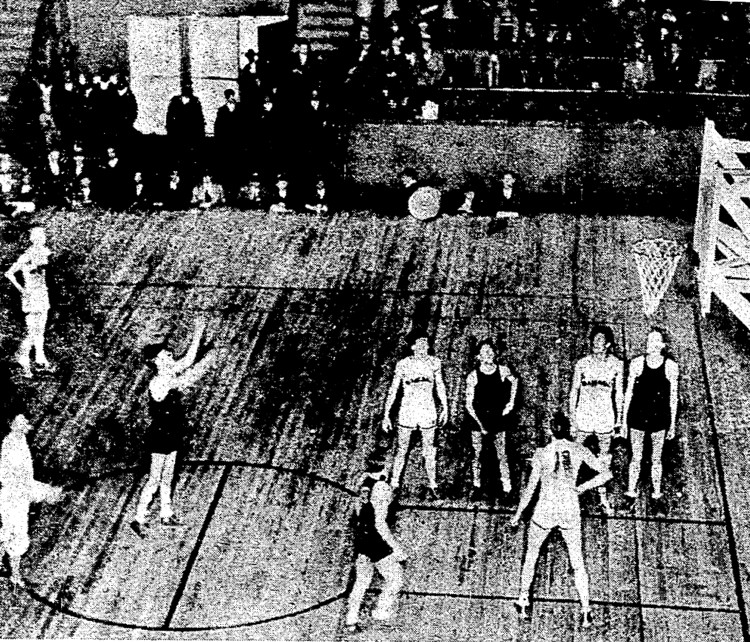
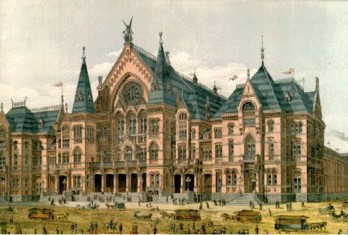
Cincinnati's Music Hall was first erected in 1878 and intended for musical performances of the fine arts along with industrial exhibitions in its wings. It was later used for numerous other purposes, including basketball games.
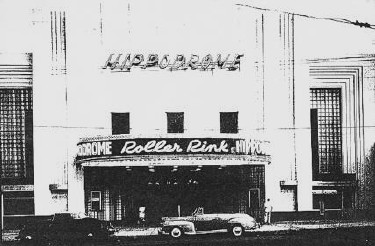
The Hippodrome in Nashville Tennessee served as the host site for numerous basketball games held between Kentucky and Vanderbilt from the 1920's through the 1940's. The facility was primarily a roller rink and reportedly had an odd shape. Rupp once commented that the Hippodrome had a bend in the court.
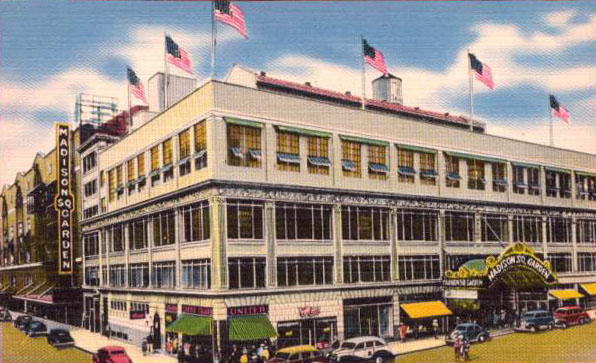
The old Madison Square Garden at 50th Street and 8th Avenue originally was designed for a myriad of shows, boxing events, circuses etc. in New York City. But under the direction of Ned Irish, it began hosting double-headers of collegiate basketball in the 1930s which attracted schools from all regions of the country. This fueled the popularity of basketball throughout not only the city but the nation in the 30's and 40's and helped give rise to national tournaments, including today's NCAA Tournament.
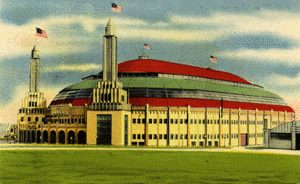
The St. Louis Arena (aka The Checkerdome) was originally built in 1929 to serve as a permanent host site for an annual dairy and livestock convention. It served many other purposes including hosting professional hockey games. The Checkerdome was the site of Kentucky's fifth National Championship victory in 1978.
Back to top.
![]()
During the 1930's, the Great Depression affected society in many ways, although not all for the worse. The New Deal and other government initiatives ushered in funds to many cities for the construction of public structures, including multi-purpose municipal arenas. Oftentimes these facilities were primarily intended for uses as armories and public auditoriums, although most also were put to use hosting basketball games. The structures themselves were sturdy and ornate and reflected the permanence and strength that government buildings strive to convey. And indeed many of these structures are still standing today.
The appearance of Municipal Auditoriums throughout the country in the 1930s helped in the development of the game of basketball as an economically viable sport. The venues provided a place for barnstorming teams to entertain before relatively large crowds and soon helped foster the formation of local teams and eventually professional leagues, such as the National Basketball League (NBL) among others, which eventually paved the way for the formation of today's NBA.
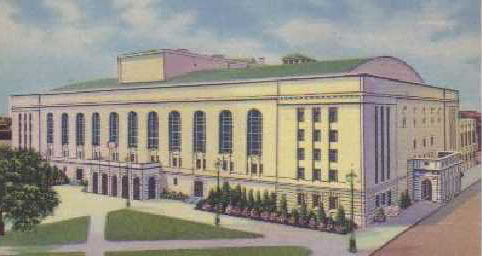
The New Orleans Municipal Auditorium was built in 1930 and was the site of the annual Sugar Bowl basketball tournament.
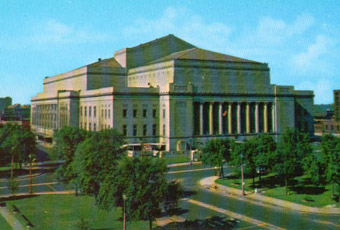
Kiel Auditorium in St. Louis hosted many games between Kentucky and then-basketball power St. Louis University.
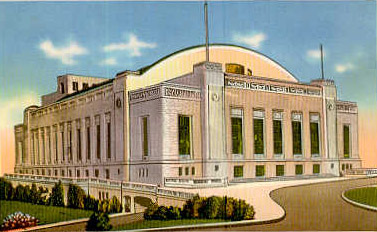
Philadelphia's Convention Hall was another site (beyond New York City's Madison Square Garden) which hosted double-headers between Philadelphia schools and invited national powers. Kentucky was a regular visitor to the city in the 1940's through 1960's, not only playing at Convention Hall but also at the city's famed Palestra.
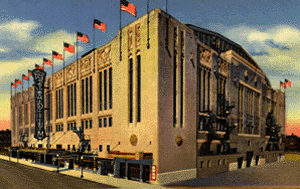
Chicago Stadium was built in 1929. Kentucky often faced DePaul there.
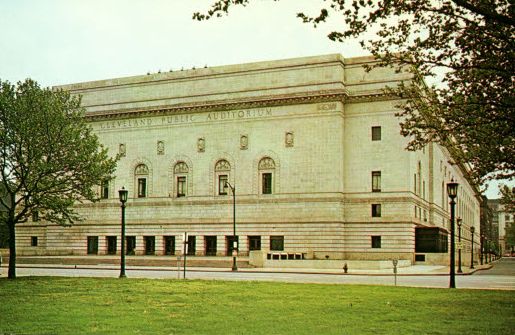
The Cleveland Public Auditorium was completed in 1937.
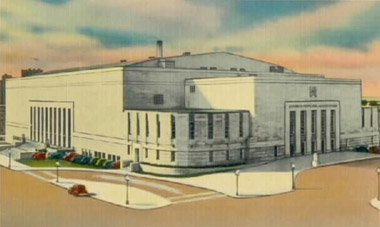
The Buffalo (NY) Memorial Auditorium was completed in 1940. Buffalo briefly enjoyed a time when they attracted national teams to travel there to compete (including Kentucky).
Back to top.
![]()
Despite the Great Depression putting a crimp on funds for new construction, the enrollment of Universities in the 1920s and 1930s grew substantially and required upgraded facilities, including the type of large structures which could not only accomodate basketball but numerous other activities such as large graduation events etc. Many were termed Fieldhouses and included not just basketball but other sports, along with oftentimes offices and classrooms.
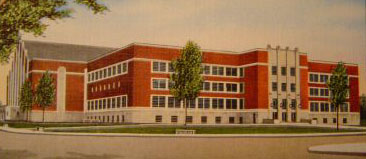
Above is an example of a gymnasium which was built at Purdue (Purdue Fieldhouse, later renamed Lambert Fieldhouse) in the late 1930's. Purdue was a national power at the time under Ward "Piggy" Lambert.
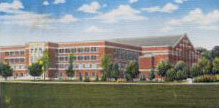
A few years later in 1940 Michigan State built Jenison Fieldhouse which interestingly was primarily based on the Purdue Fieldhouse designs.
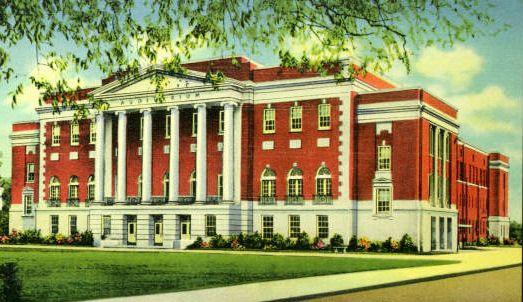
In the early 1940's, Alabama built Foster Auditorium which served as an important building not only for the basketball squad but in the history of civil rights.
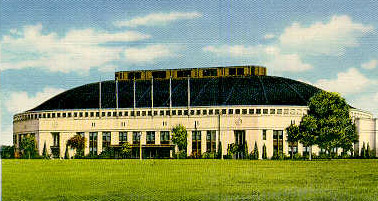
The John Parker Memorial Coliseum at Louisiana State University was built in 1940 and affectionately referred to as the "Cow Palace". It also served as an agricultural center for the school.
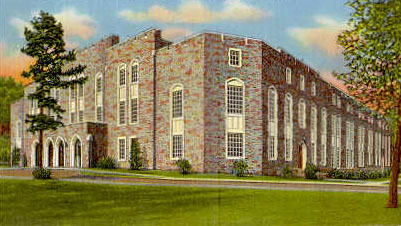
Duke University's Cameron Indoor Stadium was built in 1939. It originally was called Duke Indoor Stadium but later was renamed in honor of Duke coaching legend Eddie Cameron. At the time it opened, it was the largest capacity arena in the South with accomodations for up to 9,500 with standing-room areas.
Back to top.
![]()
After the war, basketball exploded in popularity and demanded larger facilities that could safely accomodate large crowds. With the ascent and then sudden fall of big city basketball (ie Scandals of '51), there was a renewed interest in taking collegiate basketball away from the double-headers in large city auditoriums and bring the games back to campuses where outside influences could be better controlled.
Many schools opted to name their facilities in memory of those who died in World War II and the Korean Conflict, such as Memorial Gymnasium or Memorial Coliseum.
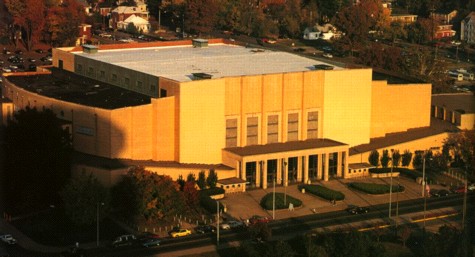
Kentucky's Memorial Coliseum was the standard of the day when it was built in 1950. Inside its halls are listed those persons from the state of Kentucky who died in World War II and Korea. Plans for a large coliseum were originally drawn up much earlier but had to be shelved during the war.
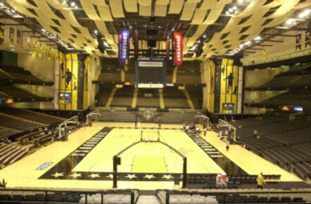
Vanderbilt's Memorial Gymnasium was built in 1952 and still used today, after having been recently renovated.
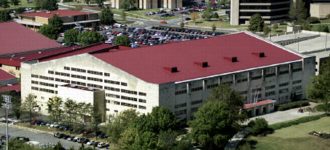
Allen Fieldhouse was built in 1955 and has a capacity of 16,300. It was named in honor of Kansas coach Forrest "Phog" Allen.
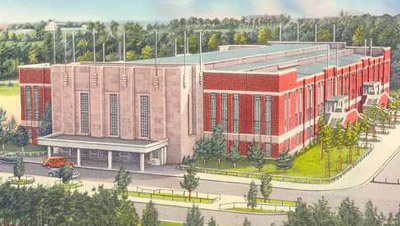
Reynolds Coliseum in Raleigh was built in 1949 and served as a showplace for Everett Case and his North Carolina State Wolfpack. The facility hosted the highly successful Dixie Classic. The facility was also used for other events, including Livestock shows.
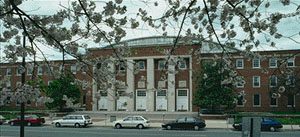
Maryland's Cole Fieldhouse was dedicated by the Kentucky's Wildcats in a game against Maryland in 1955.
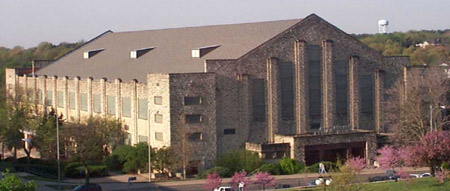
Kansas State's Ahearn Fieldhouse was built in 1951 and served as the home of the Kansas State Wildcats for over 30 years.

Freedom Hall in Louisville is located at the Kentucky State Fairgrounds and Exposition Center. It has hosted a number of NCAA Tournament games (including Kentucky's fourth NCAA championship in 1958) and has served as a neutral venue for a number of Kentucky games through the years, notably Notre Dame.
Back to top.
![]()
Perhaps due to the dawn of the space age, in the 1950's and on through the 60's and later, gymnasiums became more and more daring architecturally.
Schools began to abandon their old fieldhouses in favor of more modern arenas, many with domes and arches. Gone were brick structures in favor of steel and concrete. The capacity also steadily marched onwards to 10,000 people and beyond.
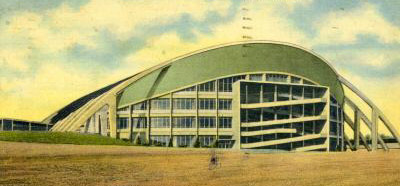
Garrett Coliesum in Montgomery AL was built in the mid-50's and was the site of a handful of games between UK and Alabama and Auburn. The first game UK played there in February 1954 may have been the first college basketball game ever held there, I'm not sure.
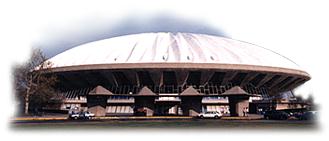
lllinois' Assembly Hall was built in 1963 and remains today an architectural marvel.
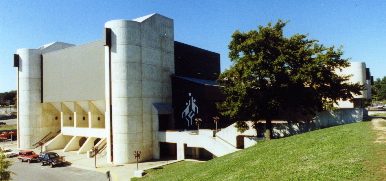
Barnhill Arena in Fayetteville Arkansas opened in 1954.
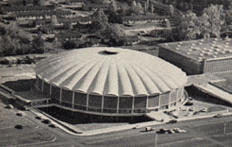
Virginia's University Hall built in 1965. Kentucky helped to dedicate the building.
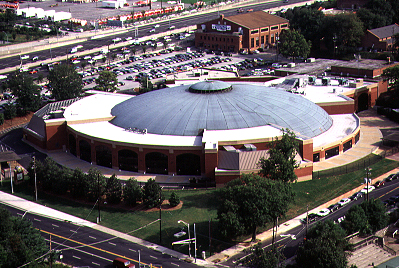
Georgia Tech's Alexander Memorial Coliseum served as the host site for many battles with Georgia Tech, back when they were a member of the SEC.
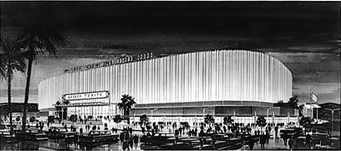
San Diego Sports Arena, site of the 1975 Final Four where UK lost to John Wooden and the UCLA Bruins in the national title game
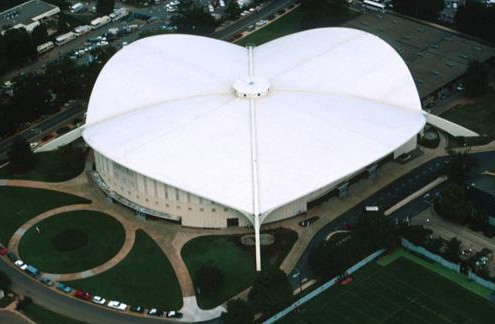
Georgia's Stegeman Coliseum sports a unique design with a large parabolic roof that is not directly connected to the walls of the stadium. It opened in 1963 and is still in use today.
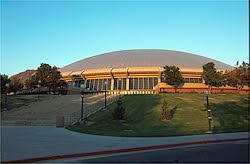
The Huntsman Center seats 15,000 and was built in 1969. Serves as the home court of the Utah Utes.
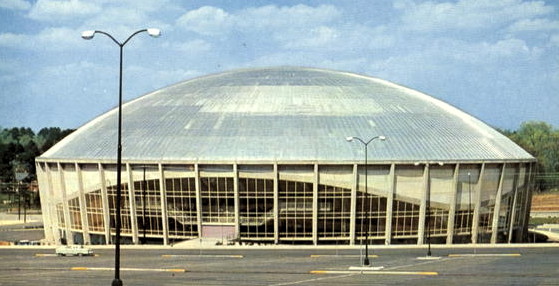
The old Charlotte Coliseum built in 1951 hosted a number of neutral-site games between Kentucky and North Carolina.
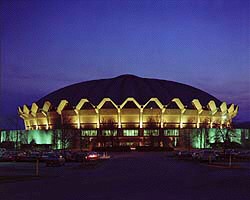
West Virginia University's Coliseum opened in 1970. Kentucky's only appearance there was the third game West Virginia played there ever, and WVU's first loss.
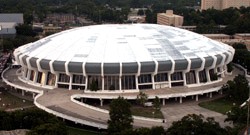
LSU's Pete Maravich Assembly Center was built in 1972 and is named in honor of the LSU great from the late '60s.
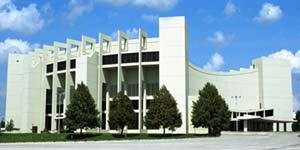
Assembly Hall in Bloomington, IN was built in 1972 and seats over 17,000.
Back to top.
Proceed to Part 2 - Modern Arenas
![]()
Return to Kentucky Page, statistics, teams, opponents, players, coaches, opposing coaches, games or search this site.
Page written by Jon Scott. Please with any corrections or additional information.
Last Updated February 12, 2016